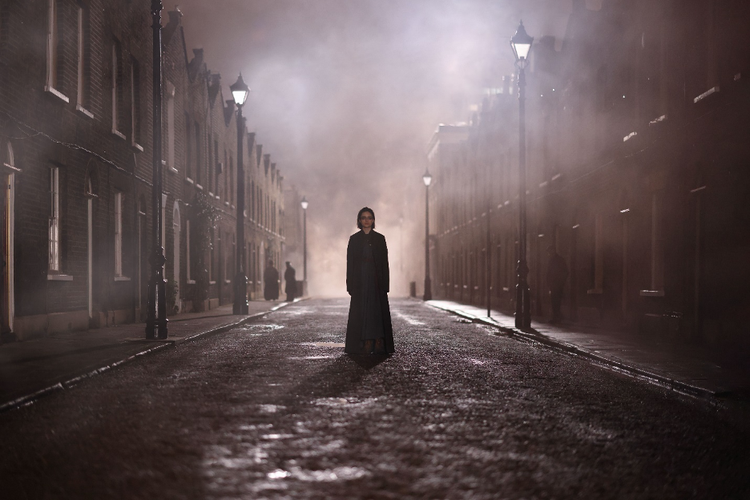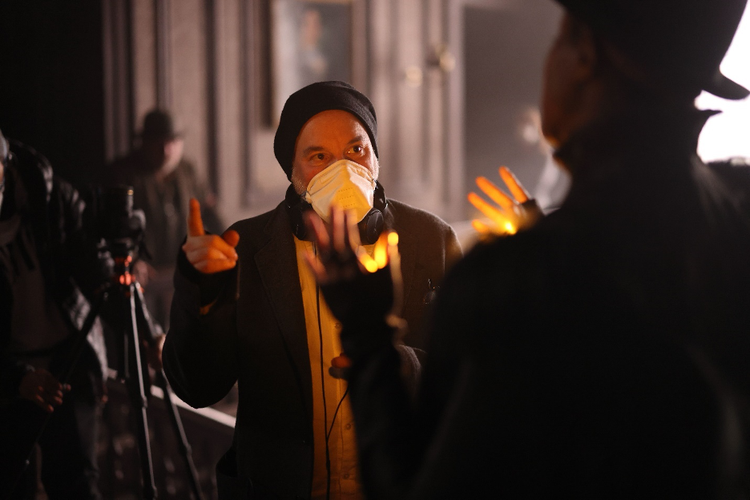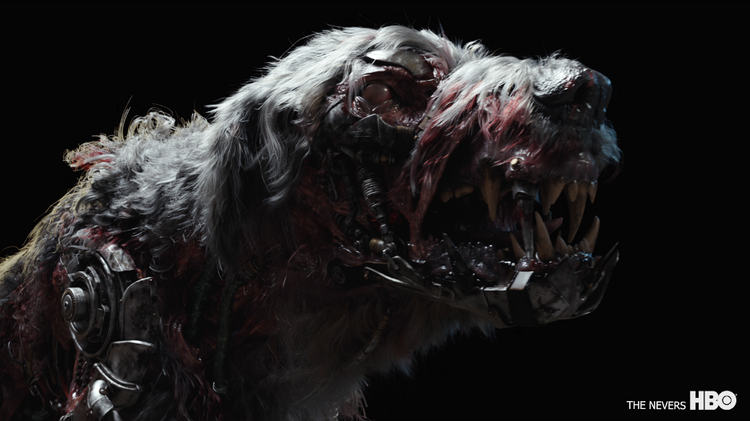Emmy nominee Johnny Han on using After Effects to craft stunning VFX on “The Nevers”

“The Nevers” is a complex, fantastical journey into Victorian London with a side of the supernatural. Characterized by stunning visual effects, it’s no surprise to find VFX supervisor Johnny Han up for an Emmy for Outstanding Special Visual Effects for his work on the Season Two episode, “It’s a Good Day.” When creating the visual effects, Johnny relied on Adobe After Effects to composite shots and backgrounds, and design complicated VFX concepts for the 4500+ VFX shots across all episodes of the series.
Read on to hear Han discuss his craft, trusting his gut, and the way he brought this visually stunning, Emmy-nominated show to life:
How did you first get into VFX design? What drew you to it?
When I was a teenager in the 90’s, I started digitizing camcorder footage into Adobe Premiere v4.2, and compositing in other crazy elements I’ve shot in Adobe After Effects v3. That was the start of it all. There was something amazing about the ability to mix together as many layers of video I wanted, masking and manipulating the images until I felt they were right. All of a sudden I was inventing new visuals to communicate my own stories. I was hooked!
What was the inspiration behind your VFX work on the film? What were you trying to achieve?
For “The Nevers”, we were inspired by the question: What would superpowers look like in the 19th century? What would people in 1896 London perceive as powerful, beautiful, or threatening? We felt they wouldn’t need to be impressed by super fantastical sci fi imagery so prevalent and popular today. But rather they would be affected by simple and familiar things to them, behaving in unfamiliar ways. For instance, for someone living in the Victorian Era, a woman wielding something familiar like fire would be emotionally affected more than a woman shooting laser beams.
What Adobe tools did you use on this project and why did you originally choose them?
I’m a long-time user of After Effects, since it first came out, and I never do anything without it. As a VFX Supervisor, at any given moment I may be asked to jump on my MacBook and do any number of things in After Effects such as compositing a shot that has been filmed to get to an editor, designing a new VFX concept to show a director, or even compositing a background into a green screen we are shooting at that very moment, to give the DoP a feel for how his lighting will integrate with a virtual background.

Myrtle Haplisch played by Viola Prettejohn. Image source: Johnny Hanl.
How did you begin this project? Can you talk about the collaborative process with the director and/or editor, and the process of creating your work from start to finish?
Once we read a script for a scene full of VFX, I begin this long journey tied at the hip with the director. We discuss visual ideas and inspiration, boil that down into a singular vision, and then reverse engineer together how we think we can achieve it. We devise a plan of how we intend to film the scene in a way that supports the story the VFX will be asked to tell. This could mean planning a bright orange light to shine on to an actress’s face, to give us the sense that a fireball is just inches from her. Then when we add the digital fireball in VFX, the actor’s face will already correctly be lit by the added fireball.

Director Andrew Bernstein talking to Rochelle Neil, who plays Bonfire Annie. Image source: Anthony Mark Saul.
Describe your favorite piece or component of the project. How did it come together and how did you achieve it?
I think that would have to be our Emmy nominated “Shockdog” scene. It is truly the culmination of our team’s passion, putting their best foot forward, successfully collaborating, and firing on all thrusters. In this scene, our hero Amalia True must wrestle and fight off a half-dog, half-robot, completely terrifying beast. We worked very closely with our fantastic stunt team, and special effects team to film such convincing performances, allowing the VFX team to truly run with it, and knocking it out of the ballpark with an amazing photoreal creature, seamlessly interwoven with our star actress. It emotionally grips you, and successfully tells a satisfying story.

Shockdog. Image source: Johnny Han.
What were some specific challenges you faced? How did you go about solving them?
Often our greatest challenge in VFX is time. Anything can be great, if you ignore that 4th dimension. But alas we are bound to space AND time. What you learn, especially in TV series production is that there’s no time to explore every possible option and to test every method. You have to trust your gut. Our minds have been developed over thousands of years. But our guts (human instincts) over millions of years. It works faster! Creativity, whether it’s drawing a picture, playing the piano, or looking through a viewfinder and snapping a photo, relies on letting go of every micro thought and correction that will throw you off. So just do what your gut tells you feels right. Then move on to the next thing. When working on “The Nevers”, If I’ve found out I’ve made a wrong choice previously, a show with 4500 VFX shots will offers you plenty of more choices ahead to make right choices.
If you could share one tip or “hack” about any or multiple Adobe tools you used, what would it be?
In After Effects, you can drop markers by hitting the * key on the number pad while you are playing back a ram preview. This is incredibly helpful when working with audio, dropping down markers at every sound cue you’re trying to line up to.
Who is your creative inspiration and why?
There are a few major directors out there that have always embraced VFX to tell stories they wouldn’t have been able to tell without it. Bob Zemeckis, James Cameron, and George Lucas to name a few. They took incredible risks trying new tricks to fool the eye with stop motion, motion control, and of course computer graphics from the moment it became available. Applying new techniques, they tried and tried again, and are still trying today, still surprising our eyes with something we haven’t seen before.
What’s the toughest thing you’ve had to face in your career and how did you overcome it? What advice do you have for people aspiring to get into the VFX space?
The toughest thing I’ve faced is someone having preconceptions of what my abilities are, whether that’s because I might seem young in age or assuming I don’t have the experience necessary. But the great thing about VFX is that your work speaks for yourself. If you show your work to be creatively and technically fantastic, people will no longer care about how old you are or where you went to school, or what degrees you hold.
Share a photo of where you work. What’s your favorite thing about your workspace and why?

VFX Supervisor Johnny Han discussing a VFX shot with DP Anette Haellmigk. Image source: Anthony Mark Saul.
This is my workspace! Being part of a filming crew on location as we shoot our visual effects scenes is my favorite place to be. Sure it can be freezing, raining, muddy, and 4am, but there’s nothing quite as exhilarating as seeing hundreds of artists all working together for a single goal, to get what we need on camera... and then go home!